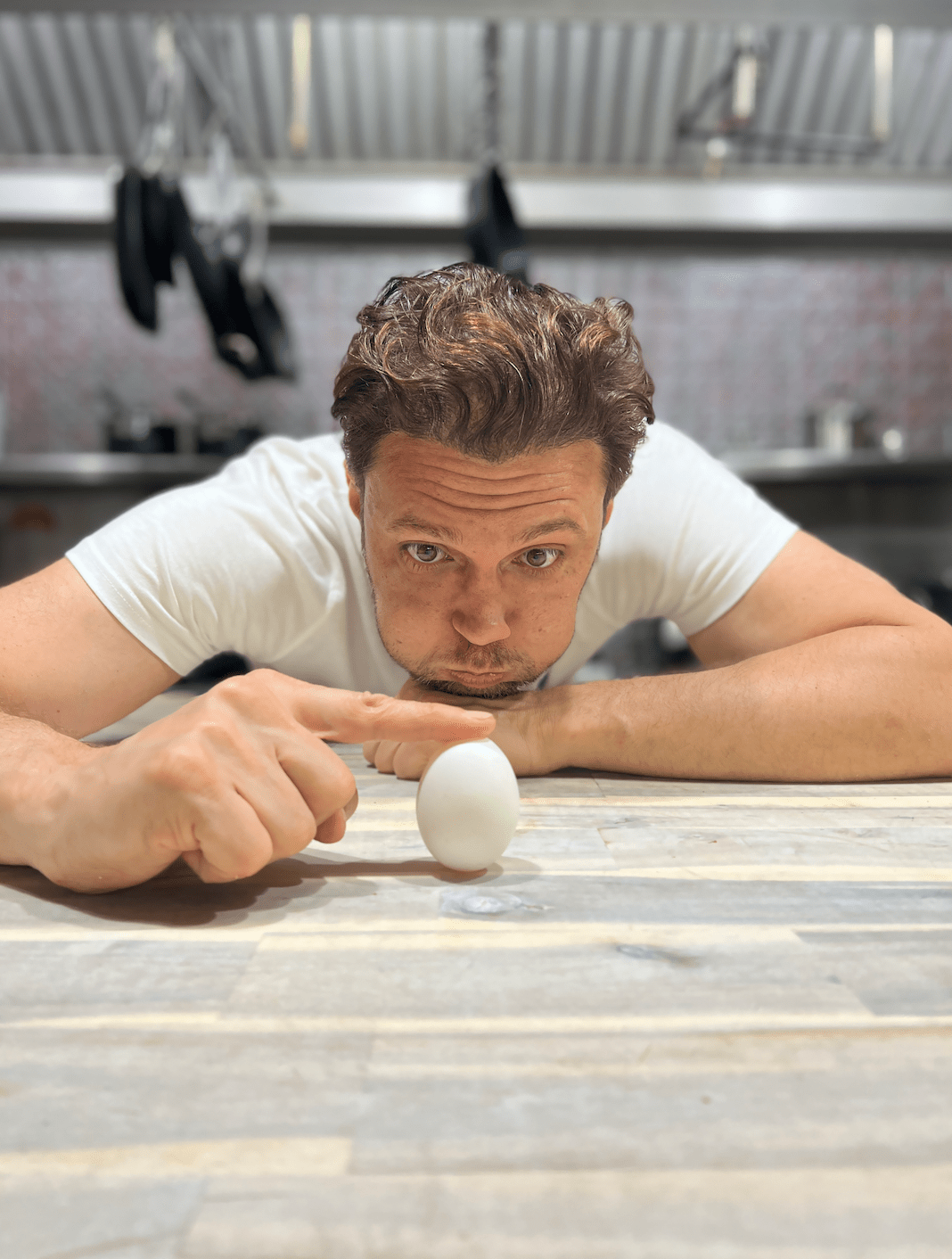How modern eggs have changed
Written by: Chef Benjamin Epicure
You walk over to your fridge, grab a carton of eggs because you feel like making hard boiled eggs. Maybe it’s the season, or perhaps you’re in the mood for deviled eggs. You prepare your water in a semi deep pot, even remember to let the eggs stay out in room temperature. A quick Google search and you get your:
- Medium eggs: 8 to 10 minutes
- Large eggs: 10 to 12 minutes
- Extra-large eggs: 12 to 14 minutes
In your excitement you may have even searched tips and tricks for peeling eggs on TikTok or Instagram. Some tell you to have ice cold water ready. Others instruct you to have actual ice cubes in Tupperware, close and shake the eggs. Some older remedies may have been to add Apple Cider Vinegar or even baking soda. Oh and how can I forget about the needle trick. Pricking the shell with a tiny needle thingy from Amazon is your answer! Well, no, not quite.
Is it just me or were eggs so much easier to peel 10,15 or 20 years ago. That question sent me on a mission. I was convinced that something was definitely up. Peeling eggs nowadays is torture. I don’t care if you’re buying the $2 Dozen or the $10 Dozen. Peeling them is not what it used to be. I remember making hard boiled eggs with my mom and grandma as a child, usually in the winter. We didn’t mess about adding anything to the water. We literally boiled water and dropped in a few eggs. Waited 10-12 Minutes and voila! We would grab a strainer and make our way to the sink. Run the faucet slowly and gently used the corner of the countertop to crack the egg then begin to peel. I also remember it to be fairly easy, after all, I was 9 years old. What on earth is going on now. Where a grown man, 5-Star Rated Chef is struggling to peel a simple egg. I refused to believe it was me. I wasn’t satisfied by all the internet intellectuals giving me their tips. So, I did what anyone would do. I drove to chicken farms and asked a bunch of questions. I spoke to dozens and dozens of farmers, different breeders from Jersey Giants to Silkies. I even purchased over 500 eggs during a span of 1 month trying to figure out why peelings eggs has changed so much. And before I go into what I found, I’d like to unpack what exactly seems to be the issue here. You see, when you peel modern day eggs, the membrane seems to be thicker than it was years ago. Additionally, egg shells are much thinner. The combination of a thinner egg and thicker membrane make for a disastrous peeling process. Ok, let’s get back to my findings…
In true supply and demand fashion, most people in the world are making less hard boiled eggs, poached eggs, and even sunny side up eggs at home. What we are seeing now is a huge increase in people making scrambled eggs or omelets. And so when farmers are breeding chickens they’re creating a breeding programs to achieve certain end results based on consumer feedback as primary goal. If consumers are complaining that little Timmy can’t crack an eggshell to help mommy make his scrambled eggs before she rushes off to Yoga. Then, the farmer will take that data and produce eggs with thinner shells. Same method applied for omelets. If you’re making omelets at home or even at a restaurant, you’ll want shells that easily crack. You wouldn’t care if the yolk is intact or not and you wouldn’t want an egg to perfectly peel since it won’t be hard boiled. It makes sense if you stop and think about it. Most people aren’t making deviled eggs, poached eggs or sunny side up eggs at home anymore. It’s a shame really. Parents either don’t know how to, don’t have the time to or are plain lazy. They’ve bowed down to a faster less classy approach to eating. I’m left heartbroken yet anxious. Heartbroken because I can’t imagine not being able to peel eggs with my children someday. Anxious because I am, at the time of the release of this article have started my own Chicken Breeding program whereby I will be perfecting the age old egg. A nice thick shell with a thin membrane easily removed by a quick peel using just your fingers. Yolk the color of a full moon and when cooked, presents itself a pinkish orange color. And once I have achieved what I call a perfect egg, consumers will have the chance to try it and judge for themselves.

